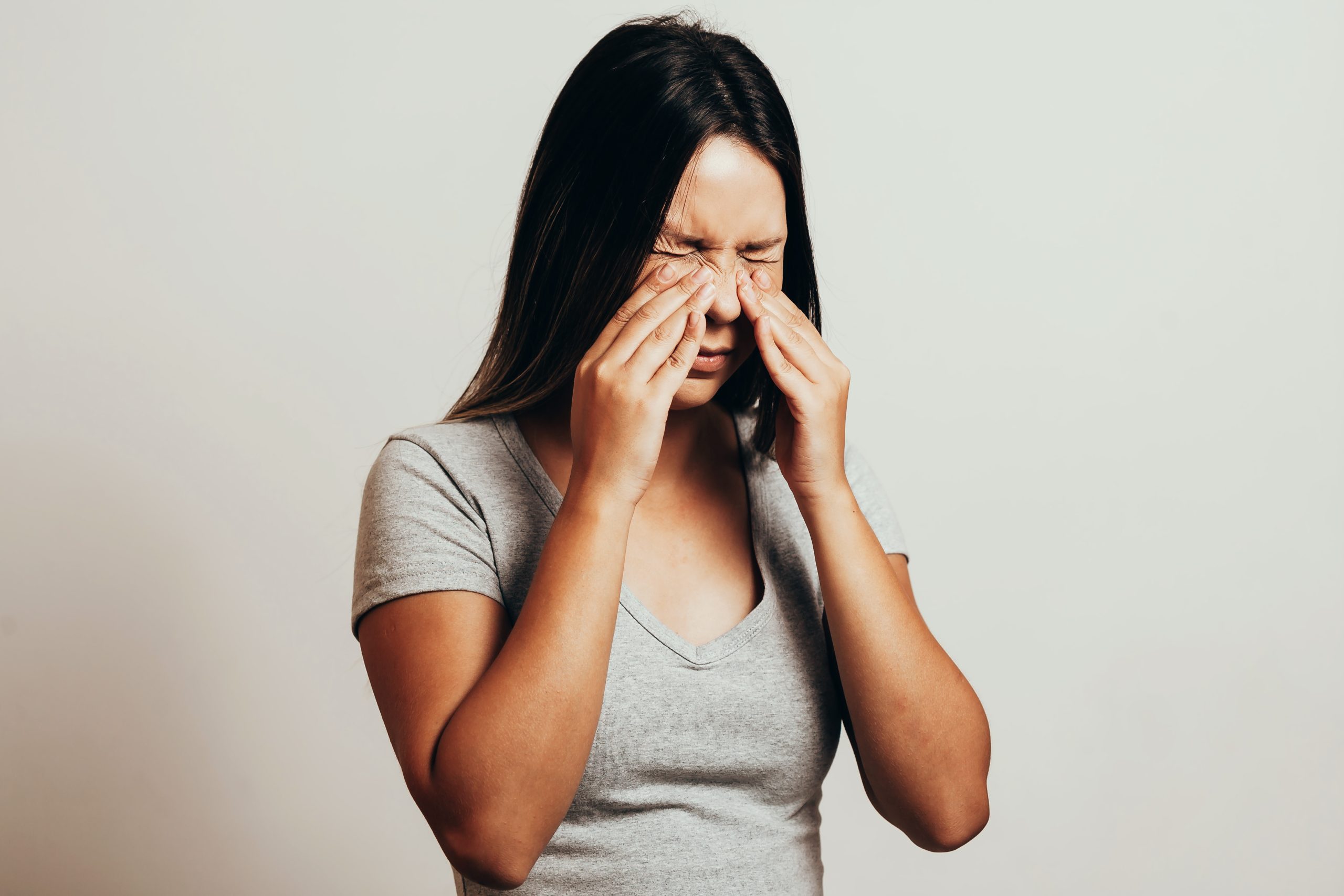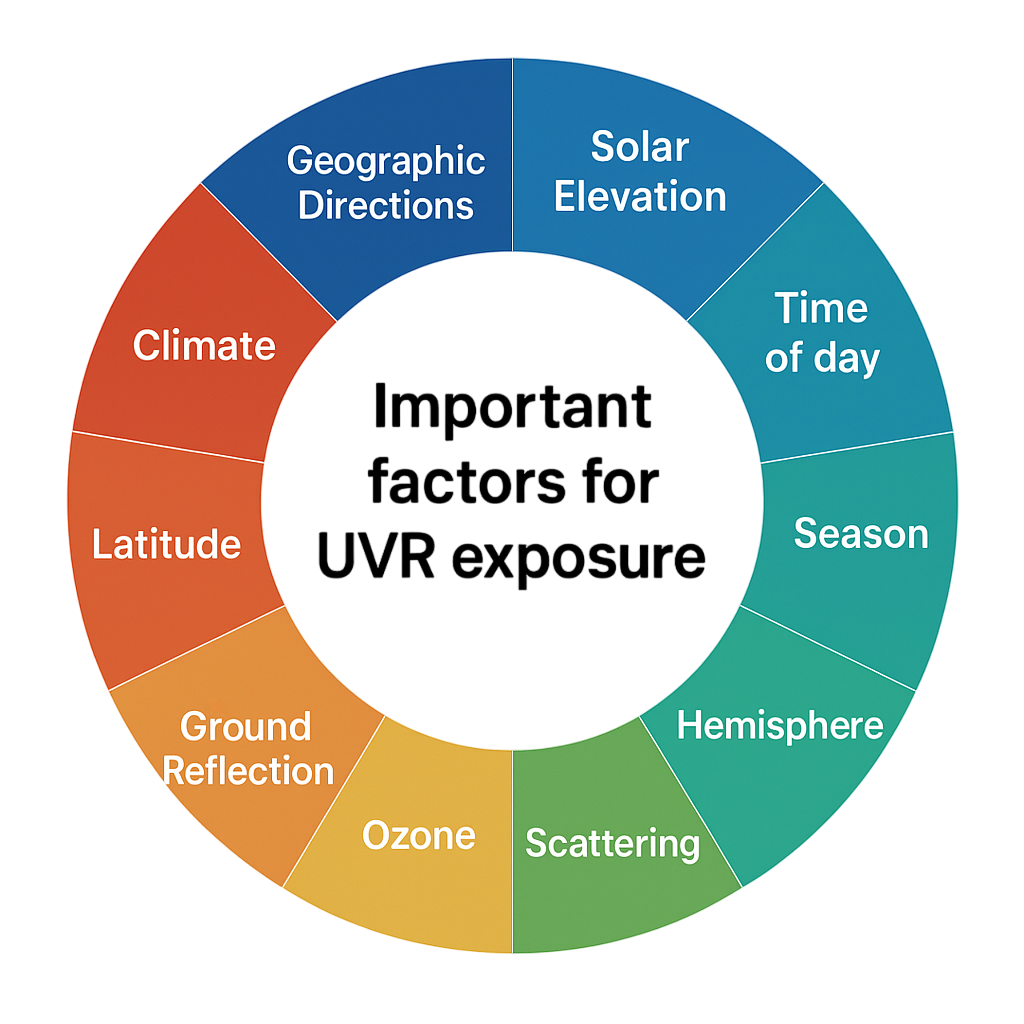Many of you are probably aware of the need to wear goggles in winter snow to protect the eyes from UV radiation reflected by the snow. However, how many people realize that protecting their eyes from UV is even more crucial in the summer? Sometimes people don’t think that they are in an environment with strong UV rays and neglect to protect their eyes, which can result in photokeratitis.
What Causes Photokeratitis?
Definition
 Photokeratitis is a form of corneal damage and inflammation caused by eye exposure to excessive ultraviolet radiation. It is usually an acute eye disease caused by short-term exposure to high-intensity ultraviolet radiation, such as sunlight, reflected UV from snow, or artificial UV sources, and is commonly referred to as “snow blindness” or “welder’s flash.” In other words, “snow blindness” or “welder’s flash” is one of the conditions of photokeratitis.
Photokeratitis is a form of corneal damage and inflammation caused by eye exposure to excessive ultraviolet radiation. It is usually an acute eye disease caused by short-term exposure to high-intensity ultraviolet radiation, such as sunlight, reflected UV from snow, or artificial UV sources, and is commonly referred to as “snow blindness” or “welder’s flash.” In other words, “snow blindness” or “welder’s flash” is one of the conditions of photokeratitis.
Both summer photokeratitis and winter snow blindness are caused by UV damage to the corneal epithelium, but the triggers are different.
The distribution of UV exposure is affected by various factors such as solar elevation, time of day, season, hemisphere, and so on (Izadi, Onaidi-Jafari, Pourazizi, Alemzadeh-Ansari, Hoseinpourfard, 2018).
During the summer, the intensity of UV rays is higher because the sun’s rays strike the Earth’s surface at a steeper angle and travel a shorter distance through the atmosphere.  Meanwhile, because the days are longer, our eyes receive UV rays for a longer period of time. In addition, the ozone layer absorbs some of the UV rays, including the more energetic UV-C and some UV-B. The concentration of the ozone layer is slightly thinner in summer compared to winter, which allows more UV rays to reach the ground. On sunny summer days, fewer clouds and stronger direct sunlight further amplify UV exposure. Most importantly, reflective surfaces like sand, water, and buildings further intensify their effect on the human eye. As summer is the peak season for travel and outdoor activities, many people will consciously protect their skin by applying sunscreen or wearing physical sun protection (hats, clothing), but they may neglect to protect their eyes. They may realize that their eyes have already been hurt by UV rays when they feel uncomfortable and suffer from photokeratitis.
Meanwhile, because the days are longer, our eyes receive UV rays for a longer period of time. In addition, the ozone layer absorbs some of the UV rays, including the more energetic UV-C and some UV-B. The concentration of the ozone layer is slightly thinner in summer compared to winter, which allows more UV rays to reach the ground. On sunny summer days, fewer clouds and stronger direct sunlight further amplify UV exposure. Most importantly, reflective surfaces like sand, water, and buildings further intensify their effect on the human eye. As summer is the peak season for travel and outdoor activities, many people will consciously protect their skin by applying sunscreen or wearing physical sun protection (hats, clothing), but they may neglect to protect their eyes. They may realize that their eyes have already been hurt by UV rays when they feel uncomfortable and suffer from photokeratitis.
In winter, snow blindness is more directly linked to snow’s high reflectivity, which is about 80-90%. Even though the UV rays reaching the ground are not as strong as in summer, the reflection from snow can still result in a significant increase in the human eye’s exposure to UV rays. Moreover, winter sports like skiing often take place in mountainous regions, where UV intensity increases by about 10-12% for every 1,000 meters of ascent. With thin air at high altitudes, UV is less obstructed by the atmosphere and more reaches the ground. Additionally, strong winds and low temperatures lead to faster evaporation of tears, leaving the corneal surface drier and more vulnerable to UV damage. For more information on winter snow blindness, refer to this article by Zoomax.
Symptoms
Both summer photokeratitis and winter snow blindness result from UV-induced damage to the corneal epithelial cells. “Photokeratitis, often described as a ‘sunburned eye,’ affects the cornea and conjunctiva, causing discomfort and potential vision issues.’’ (American Academy of Ophthalmology, 2024).
Symptoms include eye discomfort (foreign body sensation, stinging, burning), photophobia, tearing, blurred vision, and conjunctival redness. These symptoms typically improve within 24-48 hours as the cornea heals itself. However, the environmental context can influence the severity of symptoms. Summer photokeratitis often occurs in conditions of high heat and intense light, which can exacerbate inflammation. In contrast, snow blindness is associated with cold winds and low temperatures, which may worsen eye dryness and discomfort.
How to Prevent and Treat Photokeratitis
Prevention
To protect our corneas from UV rays, it’s essential to raise awareness and avoid prolonged exposure to strong UV rays, especially in areas with high reflectivity, such as snowfields, beaches, or near water. When outdoors, take regular breaks and get into a shaded or covered area.

To prevent photokeratitis in summer, wear UV-protective sunglasses and wide-brimmed hats, and avoid looking directly at the sun. We need to pay special attention to eye protection during peak UV hours from 10:00 am to 4:00 pm. To prevent winter snow blindness, wear specialized UV-blocking ski goggles or sunglasses to reduce the impact of UV rays reflected by snow. When selecting sunglasses or ski goggles, look for labels like “UV400” or “100% UV protection.”
Treatment
If you feel eye discomfort, the first thing you should do is to seek medical attention and follow the advice of professional doctors. During the photokeratitis treatment period, we should avoid strong light and UV exposure, reduce the use of electronic devices, and allow our eyes to rest. Use preservative-free artificial tears to alleviate eye dryness. If the corneal injury is more severe, the doctor may prescribe antibiotic eye drops to prevent secondary infection. Always use antibiotics strictly as directed by your doctor and avoid self-medicating. During the recovery, maintain eye hygiene and avoid touching or rubbing your eyes with unclean hands.
Vision Aids for Low Vision Patients
Photokeratitis is a self-limiting condition and usually does not cause permanent vision loss. “UV keratitis symptoms may last between six and 24 hours after exposure and generally resolve within two days. The length of exposure to ultraviolet rays can affect the severity of symptoms.” (All About Vision, 2023).
However, severe cases or improper treatment may lead to deep corneal damage or secondary infections, which can lead to visual impairment. For individuals with low vision, electronic magnifiers can greatly improve their quality of life.
- Zoomax Luna 6: a sleek, portable handheld electronic magnifier ideal for everyday use. Its compact design fits easily into a pocket, and the built-in handle makes it easy to hold.
- Zoomax Snow 12: suitable for those who need a larger screen for reading or writing. The foldable stand makes reading and writing comfortable. The OCR/text-to-speech functionality allows users to scan and listen to books written in different languages.
- Zoomax Snow Pad: fit in individuals requiring both near and distance viewing. It combines the device with a tablet and a specialized app. The innovative split-screen design allows users to view both near and distant simultaneously, making it ideal for students and professionals during meetings.
Zoomax offers a range of magnifier tailored to various needs, helping low vision individuals adapt to different scenarios.
Conclusion
Through our eyes we experience and enjoy the world around us. Taking steps to protect our eyes from UV damage and photokeratitis is so important and can make a big difference. Developing healthy eye care habits and being mindful of UV exposure can help keep your eyes healthy and safe. If you ever notice any discomfort or symptoms of photokeratitis like eye pain or sensitivity, it’s a good idea to see medical attention promptly. Following their advice will support a smooth and quick recovery.
Reference
- American Academy of Ophthalmology. (2024). Photokeratitis (snow blindness). Retrieved July25, 2025, from https://www.aao.org/eye-health/diseases/photokeratitis-snow-blindness
- All About Vision. (2023). Photokeratitis: Symptoms, causes and treatment. Retrieved July25, 2025, from https://www.allaboutvision.com/conditions/keratitis/photokeratitis/
- Izadi, M., Jonaidi-Jafari, N., Pourazizi, M., Alemzadeh-Ansari, M. H., & Hoseinpourfard, M. J. (2018). Photokeratitis induced by ultraviolet radiation in travelers: A major health problem. Journal of postgraduate medicine, 64(1), 40–46. https://doi.org/10.4103/jpgm.JPGM_52_17


